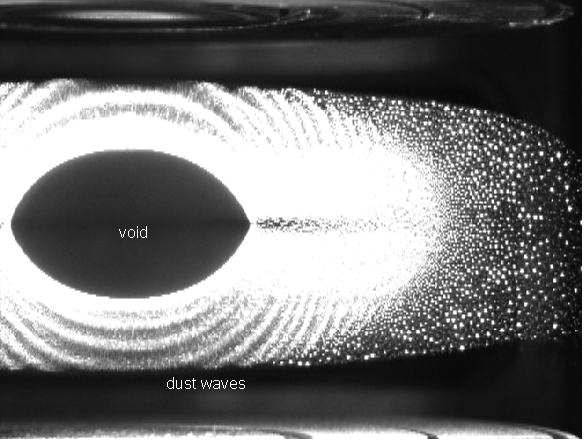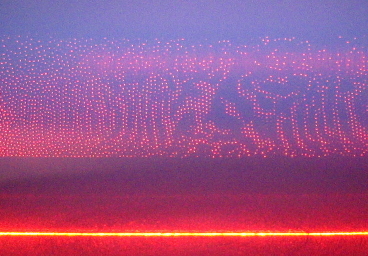Dusty Plasma is small bits of dust being held in a plasma. Plasma in a nutshell is a gas that responds to electrical fields. The idea behind a Dusty Plasma Radiator is that you could dump your heat into a material, and then send it away from the ship to cool off.
The benefits according to some writers are incredible. The radiators are basically indestructible, use less weight, can be kept on during acceleration, and might even have applications in protecting your ship.
They are these things:
The question is, 'is that really possible?'
And here we're going to put what we've found so far.
Dusty Plasma use in a reactor:
A paper on dusty-plasma use in a nuclear engine. I think if dusty plasma can be used to control the incredibly hot material inside of a reactor, it could also hold hot material outside of a ship for cooling:
Other Material:

 worldbuilding.stackexchange.com
worldbuilding.stackexchange.com
 en.wikipedia.org
en.wikipedia.org
http://homepage.physics.uiowa.edu/~rmerlino/Grabbe_Merlino-Ch_52.pdf
From:

 toughsf.blogspot.com
toughsf.blogspot.com
The benefits according to some writers are incredible. The radiators are basically indestructible, use less weight, can be kept on during acceleration, and might even have applications in protecting your ship.
They are these things:
 
Starblade frigate stats by TheRealBeef1213 on DeviantArt |
The question is, 'is that really possible?'
And here we're going to put what we've found so far.
Dusty Plasma use in a reactor:
A paper on dusty-plasma use in a nuclear engine. I think if dusty plasma can be used to control the incredibly hot material inside of a reactor, it could also hold hot material outside of a ship for cooling:
Other Material:
Can Dusty Plasma radiators protect against lasers?
From Project Rho: http://www.projectrho.com/public_html/rocket/heatrad.php#:~:text=Dusty%20Plasma%C2%A0radiator%3A Example Image: https://twitter.com/toughsf/status/1154692082478526465 A dusty plasma
Dusty plasma - Wikipedia
http://homepage.physics.uiowa.edu/~rmerlino/Grabbe_Merlino-Ch_52.pdf
From:

All the Radiators
A blog dedicated to helping Science Fiction authors create and discuss worlds where a realistic setting can still serve the fiction.
| Dusty Plasma radiator: This radiator uses conductive plasma, manipulated by magnetic fields, to move and manipulate dust particles.  The dust particles suspended in a plasma behave in fascinating ways, still being discovered by the dusty plasma field of research. Interesting behaviours include self-organising into quasi-crystalline structure, building DNA-strand-like bridges through plasma or collecting into disks with empty centres. This is all due to the self-repelling charges the dust particles gain inside the plasma.  A better understanding of these behaviors can allow for a radiator to combine every advantageous characteristic: wide range of operating temperatures, very low mass per square meter, easily manipulated by electromagnetic and electrostatic forces, low vulnerability to damage and able to survive strong accelerations.
The plasma can be quite cold and still serve to manipulate the dust particles. Low-temperature plasma does is safe to manipulate and is quite transparent to the wavelengths the dust particles will be radiating at, meaning it won't heat up or be blown away by thermal expansion. A simple dusty plasma radiator would have plasma trapped in magnetic loops, like coronal loops. Dust would travel along these plasma tubes. More advanced dusty plasma radiators would spray dust particles into a plasma and have it self-organize into thin planes for maximal radiating surface area. Simply changing the ionization state of the particles by running an electric current through the plasma would allow the dust to clump together and follow magnetic field lines straight back to a collector. |

